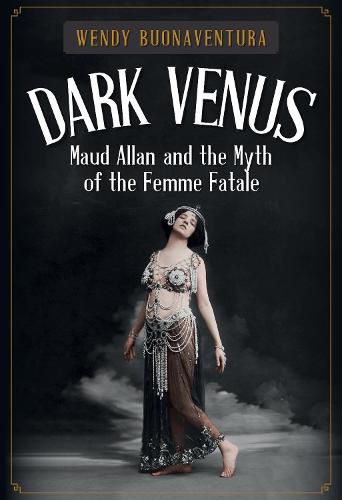Readings Newsletter
Become a Readings Member to make your shopping experience even easier.
Sign in or sign up for free!
You’re not far away from qualifying for FREE standard shipping within Australia
You’ve qualified for FREE standard shipping within Australia
The cart is loading…






‘Dark Venus’ focuses on the late 19th and early 20th century obsession with woman as femme fatale. It looks at beliefs about women’s bodies and sexuality, and how men have responded to the fear and thrill of dangerous women. Among those beliefs were that women are feral creatures in need of mental and physical constraints. Dancer Maud Allan came to embody the era’s dominant image of the femme fatale. In 1918 she brought a libel case against Noel Billing MP, who had accused her in print of lesbianism. It seems almost incredible now, but there was a belief in some circles that women such as Maud relished the deaths of soldiers at the front, that they found it erotically charged. And that ‘New Women’, by seeking male freedoms and trying to step away from their allotted role in society, were a cause of the war itself. ‘She was the Marilyn Monroe of my youth,’ wrote art critic Sir Herbert Read of Maud Allan. But to others, she and her kind were a sinister fifth column. Allan, fondling on stage the severed head of John the Baptist whose death she had demanded as her prize for dancing, expressed elements of sexual perversion, including sadism, necrophilia and incest, that were truly terrifying to Edwardian society. And as the author points out: ‘Here we are a hundred years, later with self-harm and eating disorders rife, painful, unnecessary cosmetic surgery acceptable, and injecting poisonous botox under our skin now considered just as normal as putting on make-up.’ Maud Allan’s story is still relevant today. This isn’t just the story of Allan but a close examination of attitudes to women in the Belle Epoque and beyond. To give one example, here are the names of a few art exhibitions in one year in London: ‘The Sick Woman’, ‘The Invalid’, ‘The Dead Woman’, ‘The Dying Woman’…
$9.00 standard shipping within Australia
FREE standard shipping within Australia for orders over $100.00
Express & International shipping calculated at checkout
‘Dark Venus’ focuses on the late 19th and early 20th century obsession with woman as femme fatale. It looks at beliefs about women’s bodies and sexuality, and how men have responded to the fear and thrill of dangerous women. Among those beliefs were that women are feral creatures in need of mental and physical constraints. Dancer Maud Allan came to embody the era’s dominant image of the femme fatale. In 1918 she brought a libel case against Noel Billing MP, who had accused her in print of lesbianism. It seems almost incredible now, but there was a belief in some circles that women such as Maud relished the deaths of soldiers at the front, that they found it erotically charged. And that ‘New Women’, by seeking male freedoms and trying to step away from their allotted role in society, were a cause of the war itself. ‘She was the Marilyn Monroe of my youth,’ wrote art critic Sir Herbert Read of Maud Allan. But to others, she and her kind were a sinister fifth column. Allan, fondling on stage the severed head of John the Baptist whose death she had demanded as her prize for dancing, expressed elements of sexual perversion, including sadism, necrophilia and incest, that were truly terrifying to Edwardian society. And as the author points out: ‘Here we are a hundred years, later with self-harm and eating disorders rife, painful, unnecessary cosmetic surgery acceptable, and injecting poisonous botox under our skin now considered just as normal as putting on make-up.’ Maud Allan’s story is still relevant today. This isn’t just the story of Allan but a close examination of attitudes to women in the Belle Epoque and beyond. To give one example, here are the names of a few art exhibitions in one year in London: ‘The Sick Woman’, ‘The Invalid’, ‘The Dead Woman’, ‘The Dying Woman’…